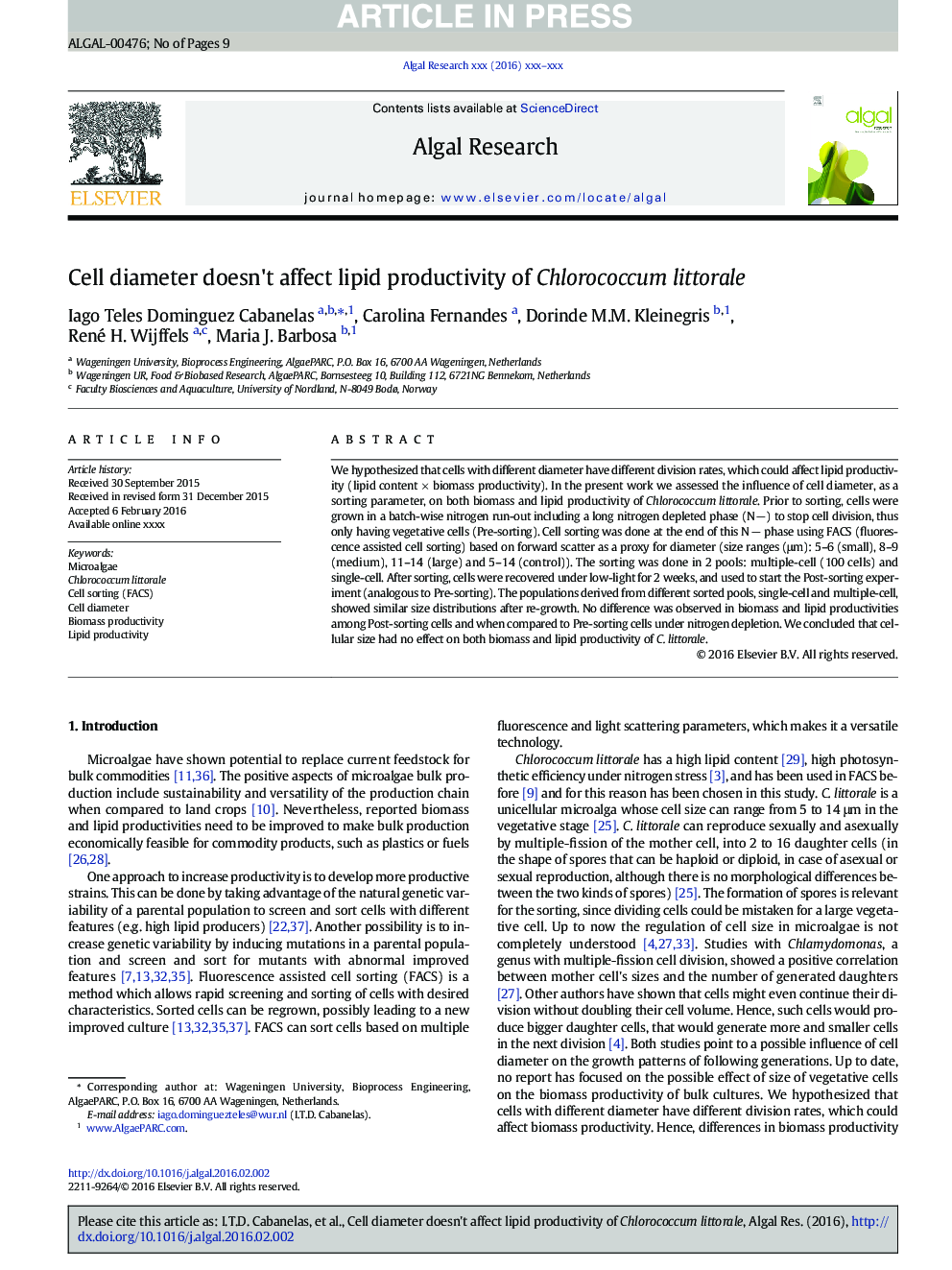| Article ID | Journal | Published Year | Pages | File Type |
|---|---|---|---|---|
| 8086425 | Algal Research | 2016 | 9 Pages |
Abstract
We hypothesized that cells with different diameter have different division rates, which could affect lipid productivity (lipid content Ã biomass productivity). In the present work we assessed the influence of cell diameter, as a sorting parameter, on both biomass and lipid productivity of Chlorococcum littorale. Prior to sorting, cells were grown in a batch-wise nitrogen run-out including a long nitrogen depleted phase (N â) to stop cell division, thus only having vegetative cells (Pre-sorting). Cell sorting was done at the end of this N â phase using FACS (fluorescence assisted cell sorting) based on forward scatter as a proxy for diameter (size ranges (μm): 5-6 (small), 8-9 (medium), 11-14 (large) and 5-14 (control)). The sorting was done in 2 pools: multiple-cell (100 cells) and single-cell. After sorting, cells were recovered under low-light for 2 weeks, and used to start the Post-sorting experiment (analogous to Pre-sorting). The populations derived from different sorted pools, single-cell and multiple-cell, showed similar size distributions after re-growth. No difference was observed in biomass and lipid productivities among Post-sorting cells and when compared to Pre-sorting cells under nitrogen depletion. We concluded that cellular size had no effect on both biomass and lipid productivity of C. littorale.
Related Topics
Physical Sciences and Engineering
Energy
Renewable Energy, Sustainability and the Environment
Authors
Iago Teles Dominguez Cabanelas, Carolina Fernandes, Dorinde M.M. Kleinegris, René H. Wijffels, Maria J. Barbosa,
